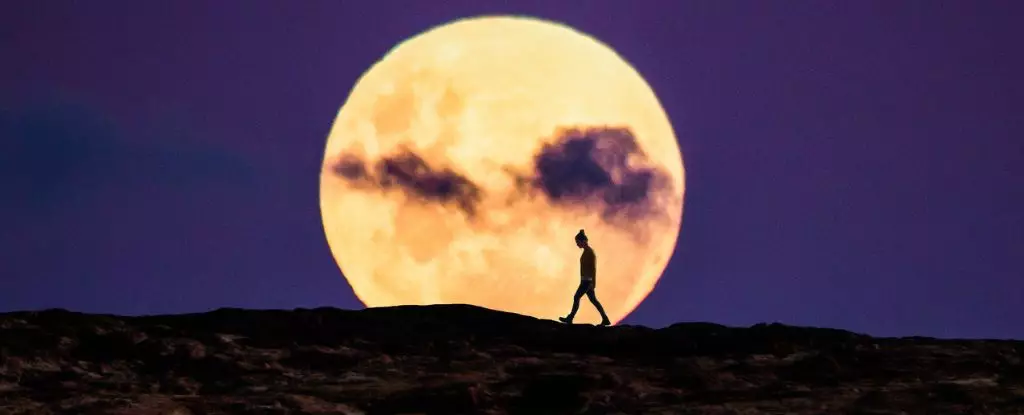Celestial events captivate human imagination, and few are as accessible and breathtaking as the supermoon. This week, stargazers are treated to the most magnificent supermoon of the year, as NASA confirms it will be visible in its full form from Tuesday evening through Friday morning. However, the pinnacle of this lunar spectacle will occur between Wednesday evening and Thursday morning when the moon reaches its closest point to Earth. This celestial alignment translates into a moon that shines approximately 14% brighter than its usual glow, a sight that even those residing in urban areas can appreciate without specialized equipment.
The term “supermoon” refers to the occurrence when a full moon coincides with the moon’s perigee—the point in its elliptical orbit where it is closest to Earth. During this week, the moon will approach within 221,938 miles, nearly 17,000 miles nearer than its average distance. This unique alignment not only enhances its brightness but also makes it a noteworthy event for astronomy enthusiasts and casual observers alike. According to Jennifer L. Hoffman, director of the Chamberlin Observatory, the accessibility of observing a supermoon contributes to its appeal; individuals need not be professional astronomers to marvel at such a sight.
To fully appreciate the moon’s brilliance, timing is essential. The optimal moments for viewing this supermoon are during moonrise on Wednesday and Thursday evening. Timing this event allows observers to experience an optical illusion as the moon appears larger on the horizon, surrounded by familiar terrestrial landscapes such as trees or buildings. This phenomenon creates a sense of scale that enhances the visual impact of the supermoon.
For those looking to maximize their experience, the Cincinnati Observatory’s Wes Ryle suggests considering a telescope for a closer look. Even though the supermoon can be admired with the naked eye, a telescope reveals intricate details and features, enriching the overall experience. Sharing this moment with others—friends or family—adds a communal aspect to the viewing, turning a personal observation into a shared celebration of nature’s grandeur.
This week’s supermoon is not merely an astronomical event; it also carries cultural significance, often referred to as the Hunter’s Moon. As described by the Farmers’ Almanac, this full moon coincides with the season when animals prepare for winter by storing fat, and hunters historically time their activities around this lunar phase to stock up on provisions. Thus, this supermoon ties into humanity’s longstanding relationship with nature and cycles, reflecting how ancient practices and beliefs continue to resonate in modern times.
This particular supermoon is noteworthy not just for its brightness but for its position in a series of four consecutive supermoons this year. The closeness of this month’s perigee and full moon makes it the standout lunar event of 2023, making it something of a rarity. Astronomer Ryle mentions that its significance extends beyond mere visuals; even when we have multiple supermoons in a row, the alignment of this particular one stands out.
If conditions do not allow for clear viewing of this week’s spectacle, there is no need for concern. Supermoons are relatively common; future occurrences are not far away. However, it is essential to note that not every supermoon will have the same visual impact, particularly those that coincide with new moons. The alignment this year offers several opportunities to experience supermoons, with another chance appearing in November.
The supermoon represents a beautiful intersection of science, nature, and cultural traditions. Whether viewed from a bustling city or a remote rural area, this celestial event encourages us to pause and reflect on the marvels of the universe. Embracing such occurrences fosters an appreciation for our place in the cosmos and reminds us that some wonders—like the supermoon—are accessible to all, inviting people everywhere to share in the awe of the night sky.


Leave a Reply